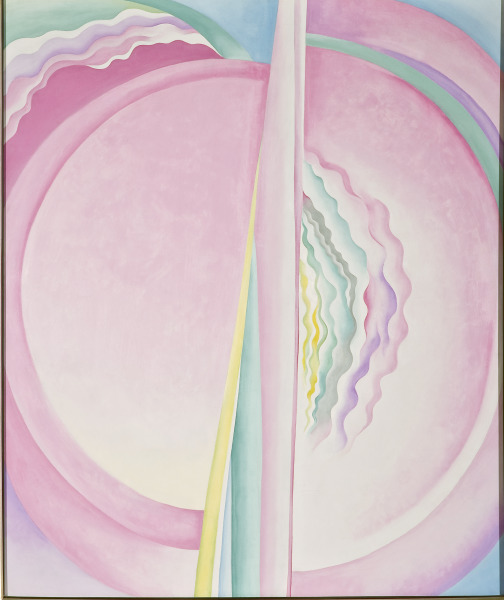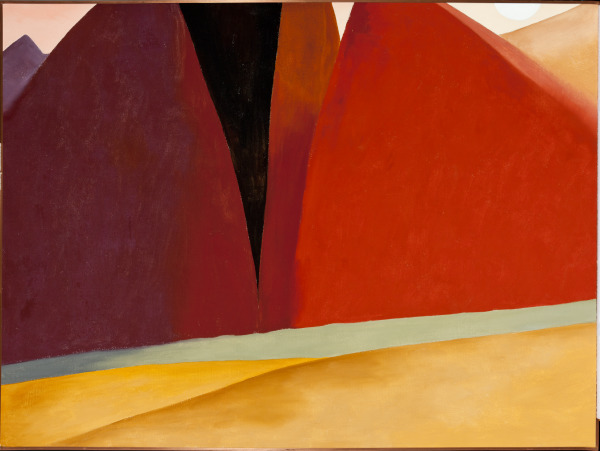Georgia O’Keeffe was born in 1887 in Wisconsin. She studied at the Art Institute of Chicago from 1905–06 and the Art Students League in New York from 1907–08. Originally trained in realist painting, O’Keeffe broke with the tradition beginning in 1912 after studying the ideas of Arthur Wesley Dow. Seeking to create art that expressed her personal feelings and ideas, she shifted her focus fully to abstract art and by 1915 became one of the first American artists to practice pure abstraction.
O’Keeffe’s work was first exhibited in 1916 by art dealer and renowned photographer Alfred Stieglitz, whom O’Keeffe later married in 1924. In 1929, she visited New Mexico for the first time, and the region’s landscape, style, and indigenous art inspired her to spend significant time creating in the state, which she finally made her permanent home in 1949.
In the 1950s, O’Keeffe traveled internationally and began painting new landscapes, such as the mountains of Peru and Mount Fuji in Japan; clouds; and rivers. She created her last unassisted oil painting in 1972 as her macular degeneration progressed but continued to work by enlisting the help of numerous assistants. She died in 1986 in Santa Fe, New Mexico.
O’Keeffe is one of the most significant artists of the 20th-century, renowned for her contributions to American Modernism. She produced more than 2,000 artworks throughout her career and is best known for her paintings of flowers, bones, New York City skyscrapers, and landscapes and subjects of the Southwest.



